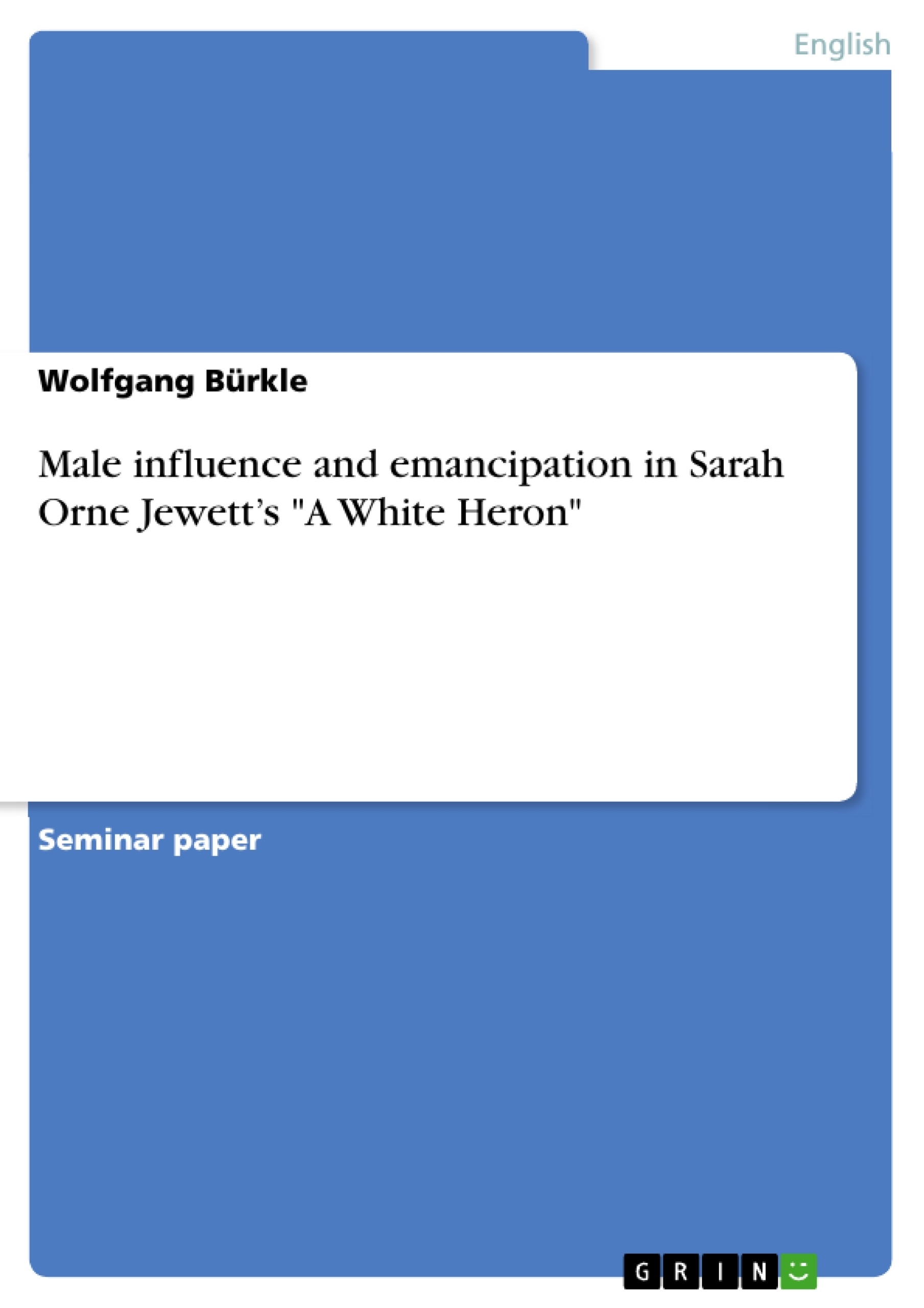Sarah Orne Jewett’s short story “A White Heron” from 1886 is about a young girl’s reaction towards a man who enters her life and who wants to persuade her to telling him where a rare bird is hiding. Although Sylvia falls in love with the bird hunter in the beginning and wants to impress him, she realizes the importance of protecting the environment around her from his influence. She does not give the secret of the bird away for the sake of love.
Jewett shows in this story that Sylvia’s world is disturbed by the appearance of the hunter. She lived happily with her grandmother in an exclusive paradise without men before. With the intrusion of the hunter in her familiar surroundings, everything changes. He is a threat to her peaceful existence and influences her future life and behaviour. This essay will show how Sylvia’s attitude towards the hunter changes and how Jewett explores the sexual conflict between the two sexes in this story.
Table of Contents
- Introduction
- Sylvia
- The Hunter
- Sylvia's Inner Conflict
- Pine Tree
- Sylvia's Love for Nature
- Sylvia's Maturation
- Conclusion
Objectives and Key Themes
This research paper examines Sarah Orne Jewett's short story "A White Heron" and its exploration of male influence and emancipation in the life of a young girl, Sylvia. It analyzes how Sylvia's initial attraction to the bird hunter evolves into a realization of the importance of protecting her environment from his potentially destructive influence.
- Male Influence and Female Agency
- Nature vs. Civilization
- Themes of Love and Desire
- The Power of Money and Materialism
- The Importance of Protecting the Environment
Chapter Summaries
- Introduction: This section introduces the main themes of the story, highlighting Sylvia's initial attraction to the hunter and her subsequent realization of the importance of protecting her environment. It sets the stage for exploring the conflict between Sylvia's desire for connection with the hunter and her love for nature.
- Sylvia: This chapter focuses on Sylvia's background and personality, emphasizing her connection to nature and her aversion to male figures. Sylvia's idyllic life with her grandmother is contrasted with the negative experiences she had with boys in her previous life in a city.
- The Hunter: The arrival of the bird-hunter, presented as a figure of potential danger and influence, disrupts Sylvia's peaceful existence. This chapter explores the hunter's attempt to persuade Sylvia to reveal the location of a rare bird, highlighting his materialistic and manipulative nature.
- Sylvia's Inner Conflict: This chapter delves into Sylvia's evolving feelings towards the hunter, highlighting her initial fear and her subsequent attraction to him. The hunter's charm and perceived authority create a complex emotional dynamic for Sylvia, pulling her towards him while simultaneously making her question his motives.
Keywords
This research paper focuses on the themes of male influence, female agency, nature vs. civilization, love, desire, materialism, and environmental protection in Sarah Orne Jewett's "A White Heron."
- Quote paper
- Wolfgang Bürkle (Author), 2006, Male influence and emancipation in Sarah Orne Jewett’s "A White Heron", Munich, GRIN Verlag, https://www.grin.com/document/55500




